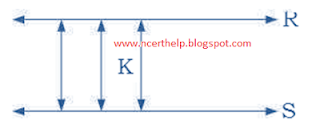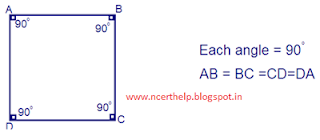2. Give a definition for each of the following terms. Are there other terms that need to be defined first? What are they, and how might you define them?
(i) parallel lines (ii) perpendicular lines (iii) line segment
(iv) radius of a circle (v) square
Solution.
(i) parallel lines
(1) Parallel straight lines are straight lines which, being in the same plane and being produced indefinitely in both directions.
(2) Perpendicular distance between two lines is always constant
(3) Parallel lines do not meet one another in either direction.
(4) These lines never intersect each other.
(5) in below figure R and S are parallel lines and K is the perpendicular distance
 |
| parallel lines |
(ii) Perpendicular lines
These lines always intersect one another at right angle (90 degree)
In below figure P and Q are perpendicular lines
 |
| Perpendicular lines |
(iii) Line segment.
A straight line drawn from any point to any other point is called as line segment.
A line segment which extends indefinitely in both directions gives a line.
 |
| Line segment |
Here PQ is a line segment
(iv) Radius of a circle.
A line segment joining the centre to any point on the circle is called the radius of the circle. It is the distance between the center of a circle to any point lying on the circle. |
| Radius of a circle |
(v) Square.
A square is that which is both equilateral and right-angled. That means all sides are equal and each angle is 90 degree.  |
| Square |











